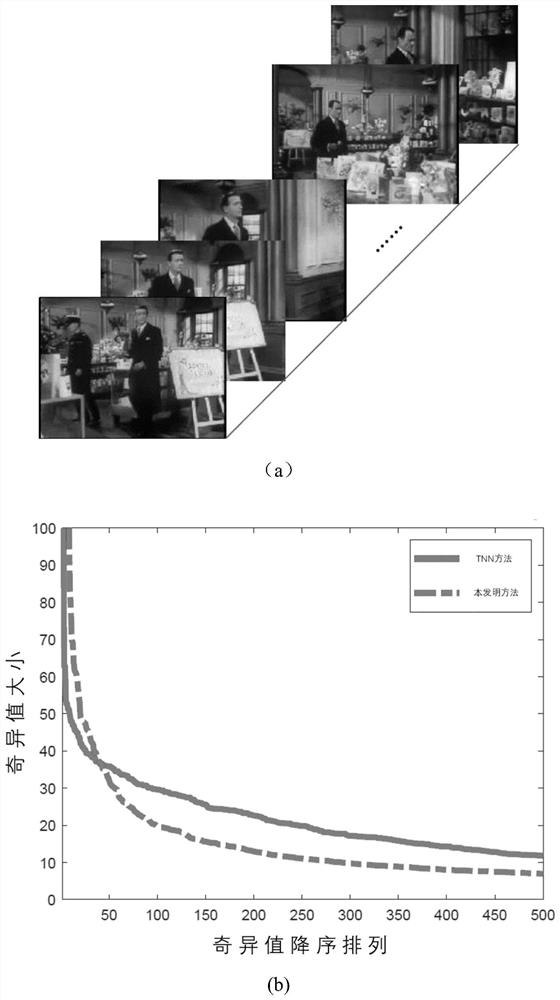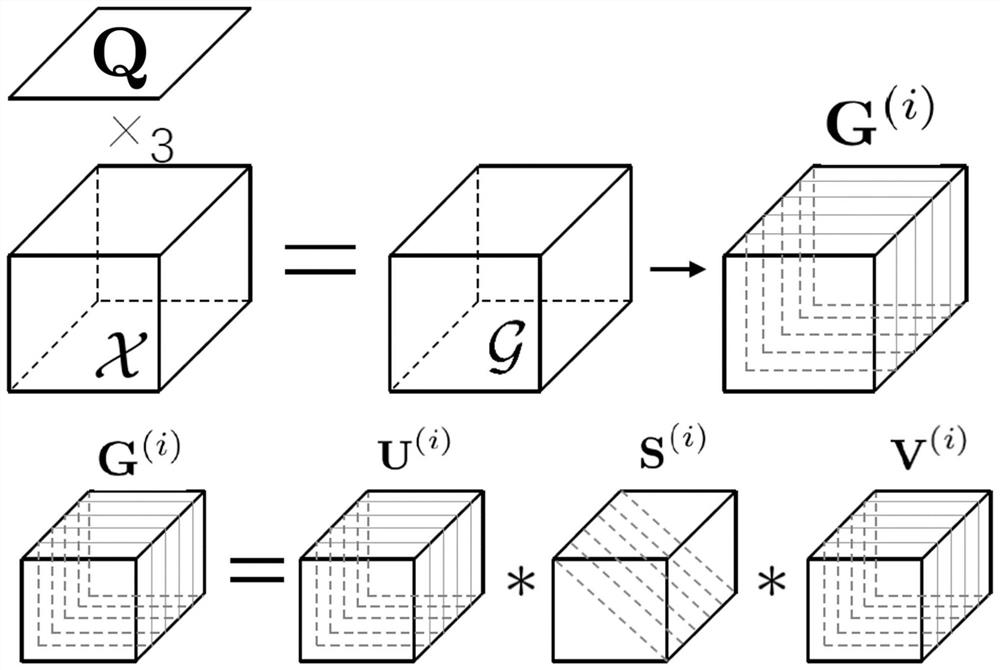Tensor low-rank model non-smooth three-dimensional image completion method based on manifold optimization
A three-dimensional image, non-smooth technology, applied in image enhancement, image data processing, instruments, etc., can solve problems such as limited application scenarios, increased computational complexity, and lack of prior explanations.
- Summary
- Abstract
- Description
- Claims
- Application Information
AI Technical Summary
Problems solved by technology
Method used
Image
Examples
Embodiment Construction
[0070] Below in conjunction with accompanying drawing, further describe the present invention through embodiment, but do not limit the scope of the present invention in any way.
[0071] The invention provides a non-smooth three-dimensional image completion method based on the manifold-optimized tensor low-rank model MOTQN, which utilizes the manifold optimization to update the data-dependent orthogonal projection base for efficient low-rank non-smooth three-dimensional images completion task, Figure 4 Shown is the specific implementation process of the method of the present invention to realize the non-smooth three-dimensional image completion based on the tensor low-rank model of manifold optimization, including the following steps:
[0072] Step 1: Select limited 3D image observation samples Suppose it is the original non-smooth 3D image to be restored After a projection operator It is obtained by the function of the indicator set Ω. The data set used in this exampl...
PUM
 Login to View More
Login to View More Abstract
Description
Claims
Application Information
 Login to View More
Login to View More - R&D Engineer
- R&D Manager
- IP Professional
- Industry Leading Data Capabilities
- Powerful AI technology
- Patent DNA Extraction
Browse by: Latest US Patents, China's latest patents, Technical Efficacy Thesaurus, Application Domain, Technology Topic, Popular Technical Reports.
© 2024 PatSnap. All rights reserved.Legal|Privacy policy|Modern Slavery Act Transparency Statement|Sitemap|About US| Contact US: help@patsnap.com










